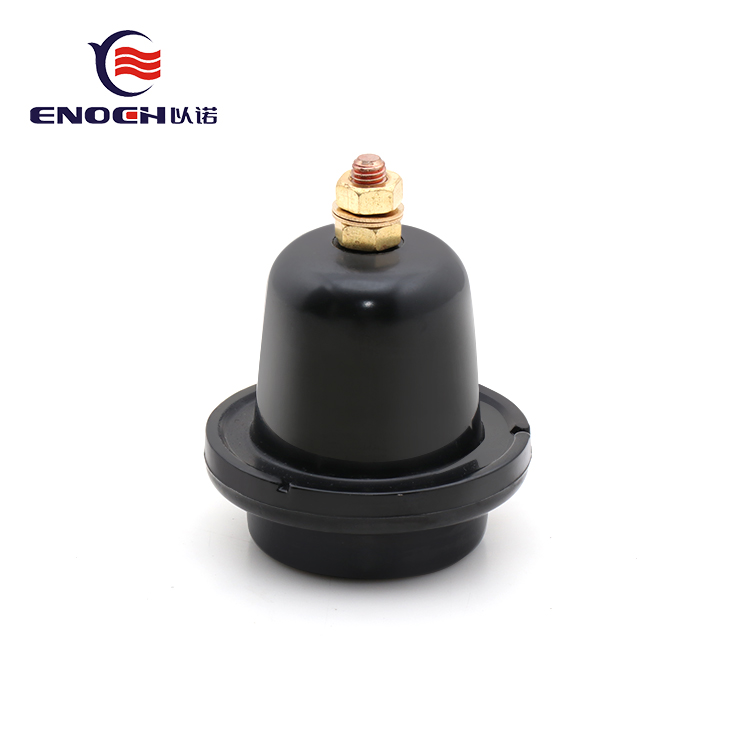Tailoring Excellence: Exploring the Diverse Variants and Models of High Voltage Bushing Wells
2024-01-23
Introduction:
In the dynamic landscape of high-voltage systems, versatility is key. High Voltage Bushing Wells, serving as critical components in these systems, are designed to accommodate various applications and voltage ratings. This blog delves into the world of diverse variants and models of High Voltage Bushing Wells, unraveling the tailored excellence that meets the specific demands of different applications and voltage requirements.
1. Application-Specific Design:
High Voltage Bushing Wells are engineered with a keen focus on application-specific requirements. Different variants are crafted to excel in diverse environments, from power generation plants to industrial facilities and beyond.
2. Voltage Ratings:
One of the primary factors influencing the design of High Voltage Bushing Wells is the voltage they are intended to handle. Multiple variants are available, each catering to a specific voltage rating, ranging from medium voltage to extra-high voltage and ultra-high voltage applications.
3. Medium Voltage Bushing Wells:
Designed for applications with moderate voltage requirements, medium voltage bushing wells typically serve distribution networks, industrial facilities, and commercial installations. They provide a reliable interface between medium-voltage equipment and the overall power system.
4. High Voltage Bushing Wells:
High voltage variants are engineered to withstand elevated voltage conditions commonly found in transmission networks and large-scale power distribution systems. These models exhibit robust insulation and sealing mechanisms to ensure safety and reliability.
5. Extra-High Voltage Bushing Wells:
For applications demanding even higher voltage capabilities, extra-high voltage bushing wells come into play. These are commonly employed in large power substations and interconnection points, where transmission voltages reach significant levels.
6. Ultra-High Voltage Bushing Wells:
At the pinnacle of voltage requirements, ultra-high voltage bushing wells are designed for the most demanding applications, including mega power transmission projects and intercontinental power links. Their construction prioritizes insulation strength and resilience.
7. Oil-Filled Bushing Wells:
Some variants of High Voltage Bushing Wells utilize oil as an insulating medium. Oil-filled bushing wells are known for their excellent insulating properties, making them suitable for specific applications where oil insulation is preferred.
8. Gas-Insulated Bushing Wells:
Gas-insulated bushing wells leverage gas as the insulating medium. These models are often used in high-voltage gas-insulated switchgear (GIS) systems, contributing to compact designs and enhanced insulation properties.
9. Outdoor and Indoor Variants:
High Voltage Bushing Wells are tailored to suit both outdoor and indoor installations. Outdoor variants are designed to withstand environmental conditions, while indoor models focus on compactness and compatibility with confined spaces.
10. Instrument Transformers Integrated Variants:
Certain High Voltage Bushing Wells come integrated with instrument transformers. This design streamlines the installation process by combining the functionalities of the bushing well and instrument transformers within a single unit.
11. Capacitor Voltage Transformer Bushing Wells:
Designed specifically for applications requiring voltage measurement and monitoring, capacitor voltage transformer bushing wells incorporate the functionality of a capacitor voltage transformer into the bushing design.
12. Resin-Insulated Bushing Wells:
Resin-insulated variants utilize epoxy resin as the insulating material. These models offer excellent dielectric properties, corrosion resistance, and mechanical strength, making them suitable for various applications.
13. Porcelain and Polymer Varieties:
High Voltage Bushing Wells may feature insulator materials such as porcelain or polymer. Porcelain offers traditional strength, while polymer insulators provide advantages like lighter weight and resistance to vandalism.
14. Customizable Configurations:
Manufacturers often provide customizable configurations to meet specific project requirements. This flexibility allows for the tailoring of High Voltage Bushing Wells to unique applications, ensuring optimal performance.
15. Compliance with International Standards:
Regardless of the variant, High Voltage Bushing Wells are designed to comply with international standards and industry regulations. This ensures that the diverse range of models meets stringent performance and safety criteria.
Conclusion:
As integral components within high-voltage systems, High Voltage Bushing Wells showcase a rich tapestry of variants and models, each finely tuned to address specific applications and voltage ratings. This diversity not only reflects the evolving needs of the power industry but also underscores the commitment to providing tailored solutions for diverse environments. In the symphony of high-voltage technology, the versatility of High Voltage Bushing Wells emerges as a testament to the precision and adaptability required to power the world.



